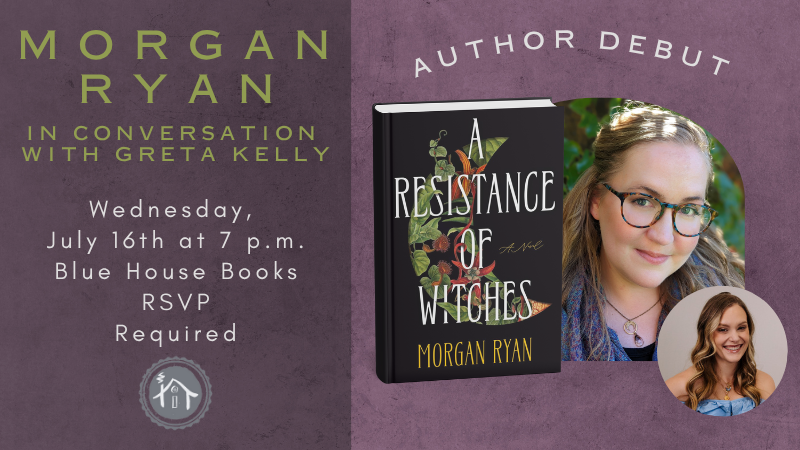I have loved horror movies since I can’t remember when, thanks to my oldest sister.
She is 13 years older than I and frequently babysat me and my other sister. Whenever she took care of us, we could be guaranteed to watch some kind of horror movie, whether on TV or at the movies.
On TV, we were regular devotees of the old horror movie franchise Creature Features, which included “Dracula,” “Frankenstein,” “The Wolfman,” “Creature from the Black Lagoon,” “King Kong” and “Them!” among its regular titles. Just thinking back on “Creature Features,” I can remember that iconic introduction with that creepy jazz score; whenever that intro came on you knew you were in for a couple hours of eerie good fun.
At the movies, I can remember her and my future brother-in-law taking us on their dates to the Keno or Mid-City drive-in theaters and watching movies like “Wait Until Dark” or “Don’t Look Now.”
As I grew older, and started going to movies with friends, the choices became a little bloodier and more graphic, films such as “Halloween,” “Carrie” and “The Thing.” My love of horror movies has never ebbed, and I still seek them out whether in the theater or streaming.
Horror is one genre that has literally hundreds of options for every taste. I readily admit that my tolerance for some of the more extreme horror sub-genres is very low; I really don’t care for a lot of blood and guts, and some of the more brutal and nihilistic films hold no fascination for me. But show me a horror film with great atmospherics, a thrilling score, believable and sympathetic characters, a nasty villain and wall-to-wall suspense, and I am in movie heaven.
When I talk about my favorite horror films, I generally get one of two responses — non-horror fans will wonder what’s wrong with me, and extreme horror fans will think I’m a wimp. Regardless, I’m going to dive right in and present some of the horror films that over the years have made the biggest impression on me and then some of my favorite horror films.
Dracula (1931)
“Dracula” was a mainstay of “Creature Features,” and I don’t know how many times I watched it as a kid. Bela Lugosi was, and always will be, the quintessential Count Dracula and Tod Browning’s film is a study in creepy atmosphere.
Certain scenes still hold up, including Dracula’s first appearance, and Renfield crawling across the floor towards a prone body. I watched “Dracula” again several years ago after having not seen it for a couple decades, and I was surprised at how boring I thought it was. If it seems contradictory to laud certain aspects of a film, but still think the overall film was kind of lame, I suppose that it is.
However, I have always felt that it is unfair to judge a film by the standards of a different era. I think it says a lot about how desensitized we have become to violence that the horror movies of one generation have now become quaint.
Wait Until Dark (1967)
It has the feel of a play adapted for the screen, which it is.
It takes place almost entirely on one set, the interior of a woman’s apartment. It has a very small cast of characters, with the primary characters being a blind woman named Susie (played by Audrey Hepburn), two scheming con men named Talman and Carlino (Richard Crenna and Jack Weston), a young girl neighbor (Julie Herrod) and a menacing, violent drug dealer named Roat (Alan Arkin).
Roat, Talman and Carlino are after a doll filled with heroin they suspect that Susie has in her possession somewhere in the apartment, brought home unwittingly by her husband. What follows is an intricate con game by the three men to get the innocent Susie to bend to their will, and Susie’s slow realization that all is not as it appears.
The film culminates in a showdown between Roat and Susie that includes one of the scariest movie jump sequences ever. I’m a big horror movie jumper, and this is a ceiling scraper of a moment.
King Kong (1933)
I would not argue with anyone who claimed that the 2005 Peter Jackson version of “King Kong” is the best adaptation of this story (forget about the awful 1976 version). The creature effects, production design and music are all incredible, and there is a really good and underrated performance by Naomi Watts, who makes the whole enterprise believable and, along with Andy Serkis’ motion capture performance as Kong, makes the relationship between beauty and beast so compelling and heartbreaking.
Having said that, I am again overwhelmed by what the craftsmen of bygone eras were able to accomplish with rudimentary technology and unlimited imaginations. To watch the 1933 version of “King Kong” is to see the triumph of human imagination over the bounds of technology. At risk of redundancy, put yourself in the place of a person from 1933 watching “King Kong” and wonder at the amazement and thrill such a person would have had to see such spectacle displayed on their screen.
One of the most memorable (and squeamish) scenes from the 2005 version is the attack in the chasm by giant insects. Apparently, this was a recreation of a similar scene from the 1933 version that was filmed and shown to preview audiences, and the audience was so traumatized by it that they fled the theater in horror. The scene was then cut from the original film released to the public and the footage was lost, never to be seen again.
It would be awesome to see that footage today. (Jackson recreated the scene for the “King Kong” (2005) DVD with the stop-motion animation that was used in 1933.)
When A Stranger Calls (1979)
Hands down, the best opening to a horror film of all time. Too bad the rest of the movie isn’t as good.
The film famously opens with a babysitter played by Carol Kane being terrorized by a mysterious caller asking her, “Have you checked the children?” What follows is 20 minutes of heightened tension as the calls continue, the girl checks the doors, and walks around a darkened house in an ever-increasing state of fear.
The camera emphasizes the isolation of the babysitter with closeups of her face and back of her head, the passage of time with images of a clock pendulum, and of course, the ever-present menacing telephone as a portal to this unseen terror. All underlined by a very effective score, increasing the sense of dread throughout the 20 minutes.
After the events at the house, the point of view of the film changes to follow a detective as he tries to track down the perpetrator after he has been released from a mental institution. This section is not necessarily bad, but it simply doesn’t have the same level of tension that had been established in the opening, and pales in comparison. It all leads to an ending that is a very scary bookend to the events in the opening section.
Annabelle (2014)
This film was rejected by both critics and audiences when it was released in 2014 as an offshoot to the “The Conjuring,” and the passage of time hasn’t been any kinder to its reputation. In fact, the studio has released several films in the “Annabelle” series since this one was released, including one titled “Annabelle: Creation,” which to my simple mind, this first “Annabelle” already was an origin story.
However, I beg to differ, and I’ll tell you why. This movie conjured up memories for me of elemental fear that I cannot ignore. When I was a kid, my grandmother and aunt lived in an old apartment building in Milwaukee on West Wells Street. This apartment building had wood floors and staircases, with a carpet runner running the length. Every step on the floor elicited a creaking that sent shivers up the spine. At the end of their hallway on the second floor was a doorway to a back vestibule that contained a garbage chute to a basement incinerator, and a stairwell that led to the basement.
In my child’s imagination, only monstrous things lived in that vestibule, starting with that garbage chute with the fiery demise at its end. And that stairwell, that led to the basement. Whenever I was asked to bring the garbage to the chute, it was the longest walk in the history of humanity, and with dread I would open that vestibule door, quickly check for any horrific beasts, and as swiftly as possible put the garbage into the fires of hell and run back to the safety of my grandmother’s apartment.
As for the basement, only once had I to descend those dreadful stairs, but at least it was in the company of my father, when he had to go down to the storage locker to retrieve something.
I bring this up because there is a scene in “Annabelle” that brings all those memories rushing back to me. In the movie, the heroine lives in an old apartment building, where there are already mysterious noises and events occurring. She goes down to her storage locker in the basement, and is assaulted by some nefarious entity. She runs screaming for the elevator, and pushes the buttons to return to her floor. But the elevator keeps opening up to the basement level, no matter how many times she pushes her floor button. She finally makes a break for the stairs, and runs up the stairs, with the entity following.
It is a very scary and suspenseful scene, expertly crafted, as is much of the film. I really feel this whole movie needs a reconsideration.
My 10 favorite horror films, in alphabetical order:
A Quiet Place (2018)
A thrilling first film by John Krasinski that emphasizes the disquietude of silence in a horror film to masterful effect.
The film focuses on a farm family, some weeks after an invasion by aliens with extremely sensitive hearing. The family does not know if any aliens are near, but the merest noise can attract these brutal killers from long distances.
After a harrowing first scene, when the family is foraging for supplies in town trying not to make noise, the remainder of the film settles in some months later as the family is preparing for the birth of a new child. If silence is a priority, you can imagine how childbirth, and a newborn infant, would be a considerable problem.
There is an incredibly suspenseful scene involving a displaced nail in a basement stairway, an alien in the house, and the mother going into labor. Great performance by Emily Blunt as the mother.
Alien (1979)
“In space, no one can hear you scream.”
That was the tagline on all the marketing for the movie. All I can say is that maybe in space they can’t hear you scream, but they sure can in a movie theater. The first time I saw “Alien” in the theater, I don’t think I was ever so scared at a movie in my life.
Ridley Scott’s space horror film is fascinating from the start, as the crew of the Nostromo, a space cargo vessel, is awakened from sleep by a distress signal picked up by Mother, the ship’s computer (I wonder if it is just coincidence that Scott used the name Mother, which naturally makes you think of “Psycho”).
A team is dispatched to a nearby planet to investigate the signal, and while on the planet they discover a gigantic alien spaceship with a dead alien whose innards appear to have exploded outward. After one of their team is attacked by some kind of parasite, they return to the ship to treat their crewmate.
To say any more would be to deprive a new viewer of truly one of the scariest movie experiences of a lifetime. With an outstanding cast of Tom Skerritt, Sigourney Weaver, Ian Holm, Yaphet Kotto, John Hurt, Harry Dean Stanton and Veronica Cartwright.
The Exorcist (1973)
Does it have the same ability to frighten as it did when it was released in 1973?
Considering that news reports at the time reported people having heart attacks and vomiting during showings, of course not. Imagine that — our world has passed “The Exorcist” by. But it is still a masterpiece of supernatural suspense.
My first viewing of “The Exorcist” was as a rental, many years after it was released. Like everyone else, the shocking scenes — mutilation with a crucifix, the levitating bed, the projectile vomiting, the swiveling of Regan’s (Linda Blair) head — were the ones that made the strongest initial impression.
In later years, however, the stronger and more lasting sequences were the ones involving Chris MacNeil’s (Ellen Burstyn) desperate search for answers, the non-horror yet horrific scenes of 1973 era medical tests, and Father Karras’ guilt. Ellen Burstyn is remarkable in the film, communicating this woman’s frustration with medical and psychiatric professionals’ inability to diagnose what is wrong with her daughter all the while keeping her fear at the events occurring in her home at bay because her main priority is caring for and finding treatment for her child.
Then there are the scenes involving the various medical tests that Regan is subjected to. The most memorable is some kind of 1973 six-legged X-ray that is attached to the ceiling and rotates around the bed like some hovering spider making more noise than a jackhammer; who wouldn’t be scared by that thing!
And then the most resonant scenes involve Fr. Karras and his mother, who is an elderly woman living in a ghetto tenement. Fr. Karras is a degreed professional psychologist who chose to go to the seminary instead of opening a lucrative private practice, and is thus unable to provide for his mother as he would wish. The circumstances of her death are prime feeding ground for the demon residing in Regan, and he uses this knowledge to devastating effect on Fr. Karras. Anyone who has had an aging parent, and has been faced with end-of-life care decisions, knows what true horror really is.
Frenzy (1972)
By 1972, the handcuffs on filmmakers from sensors were starting to come off. The limitations on what kind of violence and nudity could be displayed in movie theaters were being left behind, and Alfred Hitchcock was no exception.
Whereas in “Psycho” he was restricted by the Hays office, the motion picture production code enforced until the late-1960’s, in “Frenzy” he could really let loose. The first murder depicted in the movie features both nudity and one of the most horrific strangulation scenes ever filmed, with closeups of the victim’s face as the murderer’s tie is tightened around her neck, the camera focusing on the panicked terror in her bulging eyes as the air is squeezed out of her body.
But Hitchcock wasn’t simply trying to shock and horrify us. No, the scoundrel has a decidedly more insidious agenda. The man who made a Nazi sympathetic in “Notorious,” who made us revel in our voyeurism in “Rear Window,” and invited us to share in the hero’s obsession in “Vertigo,” now wants us to, subconsciously of course, cheer for the killer to get away with his crimes.
In the most celebrated scene in Frenzy, the killer has lost an incriminating item, a tie pin, when he dumped his latest victim in a potato sack in a truck full of potato sacks. As the killer frantically rips through the sacks in the moving truck to find the one with the body, with potatoes falling all around him, trying not to make too much noise that alerts the driver, we are caught up in the suspense of whether or not he will find his pin. And even though you ultimately want him to get caught, there is a part of you that is thrilled by his predicament and are unconsciously cheering for him to find that pin.
I guess if there is one thing that all human beings can identify with it is the desire to not get caught doing something wrong.
Get Out (2017)
Wow, what auspicious movie debuts in just a two-year period. First came Jordan Peele with 2017’s “Get Out” and then John Krasinski’s “A Quiet Place” in 2018.
“Get Out” has the simple plot device of a young man meeting his girlfriend’s family for the first time. Certainly one of those awkward life experiences that can resonate with anyone. In this case, however, the awkwardness is magnified, not just because Chris (Daniel Kaluuya) is a Black man and his girlfriend (Allison Williams) is a white woman, but because of her family’s seemingly over-the-top efforts to ingratiate themselves to this stranger.
Her father (Bradley Whitford) goes out of his way to say that Barack Obama is the greatest President of his lifetime, and feels it necessary to point out and explain why they have a Black maid and gardener. Listen carefully to how the father introduces these servants; it is a deliciously sly hint to the horrors that await.
The film follows Chris as he meets the family, which includes her psychiatrist mother (Katherine Keener) who is altogether too enthusiastic to tell Chris she can cure his smoking through hypnosis, and her brother (Caleb Landry Jones) who comes off as a psychotic from the very first meeting.
What follows is a weekend full of unease, that for Chris evolves into full-blown paranoia that something is decidedly not right with this family and their social circle. The film is a satire with razor-sharp observations on Black distrust of white people and white peoples’ supposedly benign latent racism, wrapped up in a superior suspense/horror film.
The Invitation (2015)
This little movie has the same construct and tone as “Get Out,” without the social messaging, and since it precedes “Get Out” by two years, it can’t be accused of being a copycat.
The film begins with Will and his girlfriend Kira traveling to a dinner party arranged by Will’s ex-wife Eden and her new husband David. It becomes clear that Will and Eden drifted apart following the tragic death of their son, an event that Will has still not recovered from. The party is an attempt by Eden to reconnect with old friends who had drifted apart when the couple divorced.
If you think the weekend in “Get Out” is awkward, well the dinner party in “The Invitation” is no bed of roses. Eden and David had met in a support group, and have become involved with some new-fangled cult that has supposedly brought them peace of mind that they are now trying to share with their decidedly skeptical old crowd. Will, however, is beyond skeptical and growing increasingly concerned and then paranoid that something else is going on.
Is Will, who from the very first clearly has mental issues (understandable, considering his considerable grief on the death of his son), going crazy, or is there really something nefarious afoot?
“The Invitation” is a fascinating watch from the very beginning as you try to puzzle out exactly what is going on and where it is headed, as the tension and sense of dread mounts. The no-name cast is uniformly outstanding, especially Logan Marshall Green as Will. Be sure to watch to the very last shot; it’s a doozy.
Jaws (1975)
Is “Jaws” a horror film? I think you wouldn’t necessarily be wrong to classify it as an action/adventure movie instead, but I think it still qualifies as horror. After all, if “Piranha” and “Grizzly” are horror films, why not “Jaws?”
Whether you classify it as horror or action, there is no doubt that “Jaws” is one of the most thrilling, scintillating movies ever made. For the one or two people who have never seen or heard of “Jaws,” it is the story of a 20-foot great white shark that terrorizes a small island community off the coast of Massachusetts.
Roy Sheider is the town sheriff who recently moved from the big city, Richard Dreyfuss is the oceanographer recruited by the sheriff, and Robert Shaw is the local fisherman with a history with sharks.
After the shark has killed a few people, including a young boy, the sheriff, the oceanographer and the fisherman join forces to hunt down and kill the shark. The shark attacks are brilliantly choreographed by a then-unknown Steven Spielberg, in a notoriously difficult shoot that everyone in Hollywood expected to result in a disaster. Instead, it became one of the biggest box office successes of all time, and practically invented the summer blockbuster.
Everything about the movie works, but especially the treatment of the shark, which by necessity (because of technical malfunctions with the animatronic shark) is shown only for brief periods, which heightens the mystery and fearsomeness of the animal. John Williams’ iconic score is the cherry on top, making this certainly one of the classic scarefests of all time.
The scene where Dreyfuss and Sheider come across an abandoned boat, and Dreyfuss dives to examine the hull is one of the biggest jump scenes ever filmed, but my favorite sequence is of two guys who think they can catch the shark by throwing in one of their wives’ beef roasts from a small pier on shore. Instead, one of the guys has a too close encounter with the shark in a masterfully filmed sequence that had me practically standing in my seat urging the guy to swim faster along with his friend.
I’m planning on going to Mexico on vacation next year, and have already decided to spend my time by the pool and not in the ocean; I have “Jaws” to thank for that.
Psycho (1960)
Respect has to be given. “Psycho” is probably included in every critic’s top five horror films of all time, and I can understand why. Every time I watch the movie, I put myself in the place of an average adult person in 1960 settling into a seat at the theater and anticipating the start of Hitchcock’s latest movie.
The man who made “Rebecca,” “Notorious,” “North by Northwest,” “Vertigo” and “Rear Window,” all great suspense films, but not one of them would prepare that person for what they were about to see. (SPOILER ALERT) Everyone has heard about the shower scene in “Psycho,” and it is still one of the most incredible sequences ever filmed. Even today, you would swear after watching it that you had just seen a fully naked woman brutally knifed to death before your eyes, and yet you never see any nudity and you never see the knife strike her body.
The craftsmanship on display in this sequence is extraordinary, the way you see Mother enter the bathroom through the shower curtain, the violent way the curtain is pulled back, the thrusting down of the knife, the shrieking music, the blood dripping into the bathtub, and finally Marian (Janet Leigh) reaching out in desperation for something to hold onto as her life slips away and only finds the shower curtain, which she wrenches off the rod as she falls to the ground, and the final shot of the blood pooling down the drain morphing into Marian’s lifeless eye.
I can only imagine the reaction of that 1960 average person to this scene — certainly they had never seen anything remotely like it before. And not just the naked violence of it, but this scene occurs halfway through the movie, and kills off not just the major character in the film to that point, but also the above-the-title star of the film! What audacity to both surprise and shock an audience, and to do it with one of the most memorable scenes ever filmed.
Also, the central plot point of the film (SPOILER ALERT) is that Mother is actually Norman. The entire issue of matricide and multiple personalities is so far afield from the 1960 life experience that Hitchcock must have felt it necessary to explain to his audience what they just saw, in one of the most unfortunate endings of a great film in the history of movies.
Se7en (1995)
I had seen only one film by director David Fincher when I saw “Se7en” for the first time, and that movie was “Alien 3,” which I did not care much for. It was a movie that to me seemed burdened with a sense of dread from the outset, a totally joyless concoction.
After seeing “Se7en,” “Alien 3” seemed more like “Singing in the Rain.” “Se7en” is undoubtedly one of my most conflicted movie experiences — on one hand, I have never been more depressed by a film, and on the other, never more entertainingly horrified and mesmerized.
The film is set in Philadelphia, and never has a city looked more awful on film than Philadelphia in “Se7en.” The entire film is dark and rainy, and set in some of the most gruesome looking places you can possibly imagine. Even the penthouse apartment where the first killing is set seems dark and uninviting.
The plot involves a serial killer who is inspired by the seven deadly sins — gluttony, greed, lust, sloth, envy, pride and wrath. Morgan Freeman is the veteran detective on the verge of retirement who is convinced that the killer is trying to make a statement and will not stop until that vision is fulfilled, while Brad Pitt is his young, rash and hot-tempered partner and Gwyneth Paltrow is Pitt’s pregnant wife.
The killings are frankly diabolical, and to try to describe them would be at once both vulgar and pathetically inadequate. I was disgusted, and yet could not force myself to turn away, and the further along the movie went I was totally fascinated by the increasingly grisly crime spree.
And the ending … let’s just say it is an ending I will never forget.
The Silence of the Lambs (1991)
The only horror film to ever win the Academy Award for Best Picture, and certainly a most worthy winner. It is also one of only three films to win all five of the top Oscars — Picture, Actor, Actress, Director and Screenplay — along with “One Flew Over the Cuckoo’s Nest” and “It Happened One Night.”
Another serial killer movie, this one involves the FBI’s attempts to capture the killer known as Buffalo Bill, who kidnaps, kills and skins his victims. The head FBI investigator Jack Crawford (Scott Glenn) wants to glean information from the jailed notorious serial killer Dr. Hannibal “The Cannibal” Lector (Anthony Hopkins), but convinced that Lector will not talk to him, he sends a young FBI trainee Clarice Starling (Jodie Foster).
This begins a cat and mouse relationship between Lector and Starling, as Starling tries to get info from Lector in time to save Buffalo Bill’s latest victim, and Lector wants to psychologically torment Starling whom he has grown fascinated with.
The scene where Starling first meets Lector, in a Baltimore prison hospital for the criminally insane, is magnificent, as Starling is rushed through the hospital’s inner corridors, down a flight of stairs into a prison atmosphere that can only be described as hellish. She is directed to a cell where she meets Lector, who appears behind a glass wall standing perfectly erect dressed all in white, staring at Starling with intense, unblinking eyes. It is one of the great character introductions in all the movies — Lector is at once both fascinating and revolting. Starling is clearly intimidated but also determined, which impresses Lector. He agrees to help her, but not without first threatening her with one of the all-time great movie lines involving a census taker and a glass of wine.
Foster and Hopkins are fantastic in the movie, and certainly Hopkins’ Dr. Lector will be remembered as one of the most indelible movie characters ever created.
Honorable mention
28 Days Later (2002); 28 Weeks Later (2007); 30 Days of Night (2007); Aliens (1986); Altered States (1980); An American Werewolf in London (1981); Annabelle (2014); Arachnaphobia (1990); Bram Stoker’s Dracula (1992); Carrie (1976); Christine (1983); Dead of Winter (1987); Devil (2010); Don’t Look Now (1973); Dreamscape (1984); Fright Night (1985); Ghost Story (1981); Halloween (1978); Insidious (2010); Invasion of the Body Snatchers (1978); It (2017); Jacob’s Ladder (1990); King Kong (1933); King Kong (2005); Life (2017); Mimic (1997); Misery (1990); Night of the Hunter (1955); Orphan (2009); Pan’s Labyrinth (2006); Paranormal Activity (2007); Pitch Black (2000); Poltergeist (1982); Raising Cain (1992); The Birds (1963); The Cabin in the Woods (2011); The Conjuring (2013); The Crazies (2010); The Dead Zone (1983); The Descent (2005); The Exorcist Part III (1990); The Fly (1986); The Fog (1980); The Fury (1978); The Mist (2007); The Mothman Prophecies (2002); The Omen (1976); The Others (2001); The Relic (1997); The Ring (2002); The Shining (1980); The Spiral Staircase (1946); The Stepfather (1987); The Thing (1982); The Witch (2015); The Wolfman (1941); The Wolfman (2010); Them! (1954); Train to Busan (2016); Wait Until Dark (1967); What Lies Beneath (2000); When A Stranger Calls (1979); Wolfen (1981); World War Z (2013)














